Farming is the backbone of many economies, providing food and other products for local and global consumption. Sustainable agriculture is a vital aspect of modern farming practices. Sustainable agriculture aims to produce food, fiber, and other products to support the land’s long-term health and productivity while benefiting the farmer and the community. However, the sustainability of farming practices is often called into question, particularly in terms of the health of the soil.
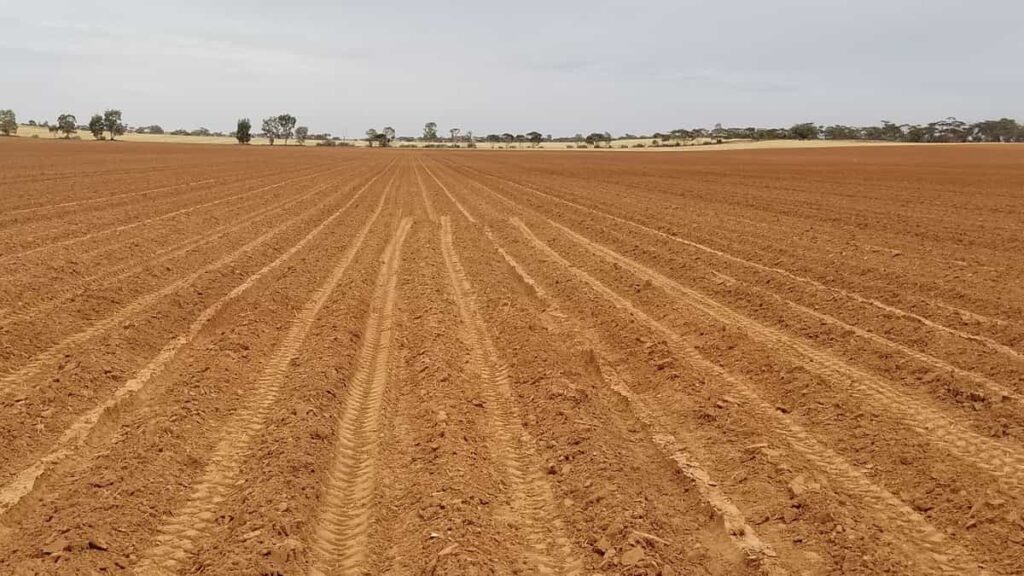
Soil health is crucial for the productivity and profitability of farms, as well as for the overall health of the environment. One of the critical components of sustainable agriculture is soil health. In this article guide, we will explore the importance of soil health in farming, including the benefits of healthy soil, the factors that contribute to soil health, and strategies for improving soil health on farms.
The importance of Soil Health in farming
Importance of Soil Health in farming
Soil is the foundation of all agriculture. It provides the necessary nutrients and water for plants to grow and supports the microorganisms that help break down organic matter and release those nutrients. However, soil health is often overlooked in modern farming practices. It is a mistake, as healthy soil is essential for sustainable agriculture.
Healthy soil can hold more water and nutrients, so plants can easily access them. It improves crop yields and reduces the need for synthetic fertilizers and pesticides. Additionally, healthy soil can support a diverse community of microorganisms, which helps improve soil structure and fertility.
In case you missed it: How to Break Down Clay Soil: Naturally Amending with Gypsum, Manure, Sawdust, Vinegar, Earthworms, and Lime
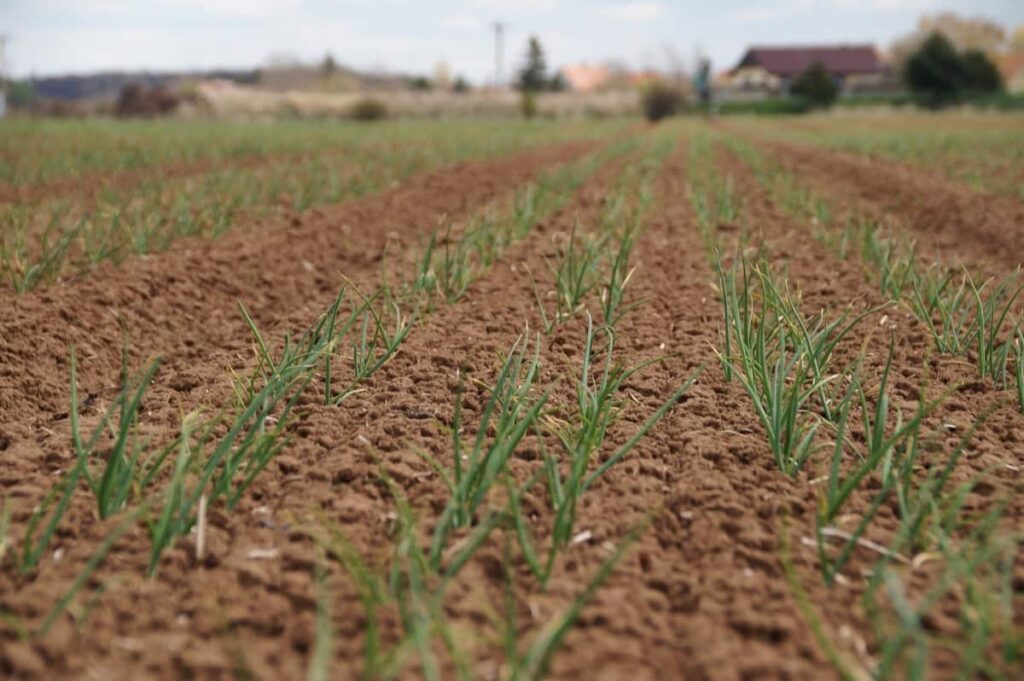
What is Soil testing?
Soil testing is analyzing soil samples to determine the soil’s nutrient content, pH levels, and other properties. This information is then used to make informed decisions about managing the soil and improving crop yields. Different types of soil tests can be performed, each designed to measure specific properties of the soil. Some of the most common types of soil tests include:
- pH test: The pH test measures the acidity or alkalinity of the soil. Suppose the pH level that is too high or too low can lead to nutrient deficiencies and poor crop growth.
- Nutrient test: Nutrient tests measure the levels of various nutrients, such as nitrogen, phosphorous, and potassium, in the soil. These tests help to identify nutrient deficiencies and guide fertilizer application.
- Texture test: Texture tests measure the soil’s sand, silt, and clay proportion. This information is used to determine the soil’s water-holding capacity and nutrient-holding capacity.
- Organic matter test: Organic matter test measures the organic matter content in the soil, which is essential for soil health and fertility.
- Cation exchange capacity: Cation exchange capacity measures the ability of the soil to hold and exchange positively charged ions such as calcium, magnesium, and potassium. This test helps to identify the soil’s fertility and nutrient-holding capacity.
How does Soil Testing affect Soil Health?
Soil testing is an important tool for farmers, allowing them to make informed decisions about managing their soil. Farmers can determine their soil’s pH levels and nutrient content by testing the soil, which can guide fertilizer application and other management decisions. Furthermore, soil testing helps farmers identify potential problems, such as nutrient deficiencies or pH imbalances, before they become significant issues.
In case you missed it: 22 Agricultural Apps for Smart Farming Solutions: Help with Farm Management, Soil, and Crop Yield
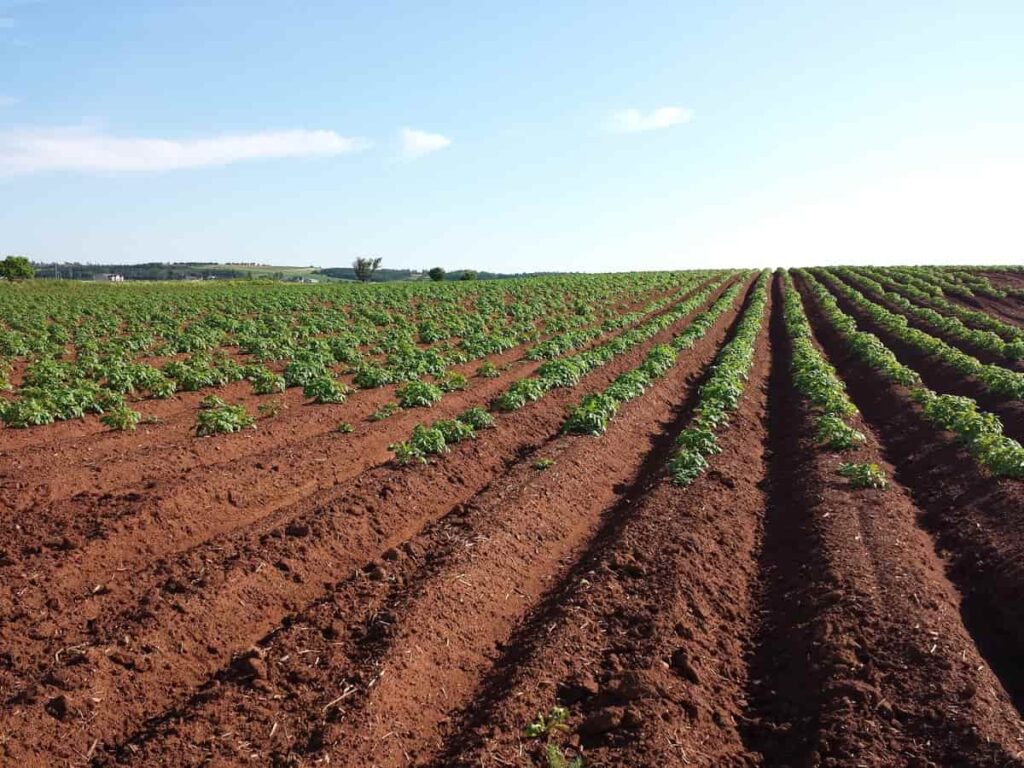
It allows them to take corrective action before crop yields are affected. Additionally, soil testing can help farmers identify areas where yields are meager, which can guide management decisions to improve those areas. Additionally, soil testing benefits farmers and individuals planning to grow vegetables or plants in their backyards. By testing the soil, they can determine their soil’s pH levels and nutrient content, guiding their decision on what to plant and how to take care of it.
By analyzing the soil, farmers and individuals can identify nutrient deficiencies and pH imbalances and make informed decisions about managing their soil. It can help to improve crop yields, reduce the need for synthetic fertilizers and pesticides, and promote sustainable agriculture.
How to perform Soil Testing and maintain Soil Health?
- Sample collection: Collect soil samples from different parts of the field, taking samples from the topsoil and the subsoil. The samples should be taken at least 6 inches deep. Mix the samples in a clean container.
- Lab analysis: Send the soil samples to a soil testing laboratory. Most state universities or agricultural extension services offer soil testing services. Specify what type of tests you want to perform, such as pH, nutrient content, and organic matter.
- Results interpretation: Once the results are received, farmers can interpret them and use the information to make informed decisions about managing their soil.
- Sample preparation: Some laboratories require samples to be air-dried, crushed, and sieved before sending them to them; make sure to check their requirements before sending the sample.
- Timing: The timing of soil sampling is also important. It’s best to take soil samples at a moderate moisture level. The ideal time to sample is usually just before planting or after harvest.
It’s also essential for farmers to keep records of their soil testing results, allowing them to track changes in soil health over time. It can help to identify trends and guide management decisions. Farmers can also use digital soil testing tools, which use sensors to measure the soil’s pH, moisture, and temperature. It is an easy and cost-effective way to perform soil testing, but these tests are less accurate than lab tests.
Benefits of Healthy Soil in farming
Healthy soil is essential for sustainable farming practices. It provides the foundation for plant growth and is crucial for the productivity and profitability of farms. Some of the key benefits of healthy soil include the following:
- Increased crop yields: Healthy soil is rich in nutrients and microorganisms essential for plant growth. It results in higher crop yields, increasing a farm’s profitability.
- Reduced erosion: Healthy soil can better hold onto water and resist erosion. It can help prevent soil loss and sedimentation in waterways, negatively impacting water quality and aquatic ecosystems.
- Improved water retention: Healthy soil can hold onto water better than degraded soil. It means that plants can access water when they need it, even during dry periods. It can help reduce the need for irrigation and save farmers money on water costs.
- Enhanced biodiversity: Healthy soil is home to various microorganisms and other organisms. This biodiversity can help improve soil health and resilience and provide a habitat for beneficial insects and other organisms that can help control pests.
In case you missed it: How to Fix Sulfur Deficiency in Plants/Soil: Preventing Naturally, Organically, and Chemically
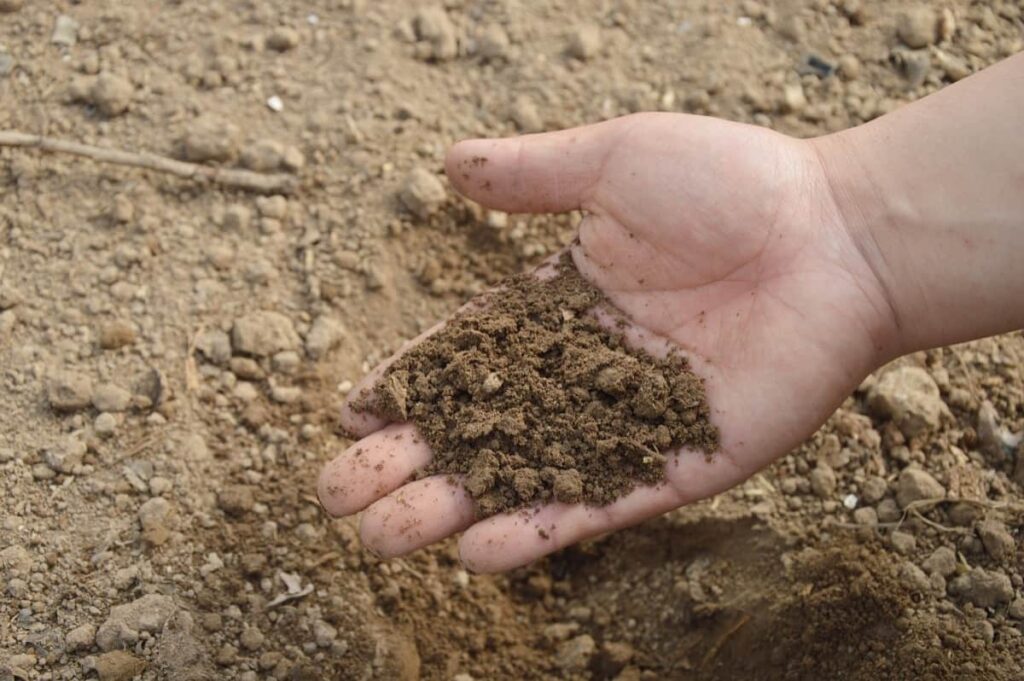
Role of Soil in Sustainable Agriculture
Soil plays a critical role in sustainable agriculture. It is the foundation of all agriculture, providing the necessary nutrients and water for plants to grow and supporting the microorganisms that help to break down organic matter and release those nutrients. Healthy soil is critical for sustainable agriculture because it can hold more water and minerals, increasing crop yields and reducing the need for synthetic fertilizers and pesticides.
Additionally, healthy soil can support a diverse community of microorganisms, which helps to improve soil structure and fertility. Moreover, soil also contributes to carbon sequestration and climate change mitigation. By storing carbon, soil helps to reduce the carbon dioxide in the atmosphere, which helps to slow the rate of climate change.
Sustainable agricultural practices such as conservation tillage, cover cropping, and crop rotation can help to increase soil carbon sequestration. However, many modern farming practices have led to soil degradation and loss of soil health. It includes using synthetic fertilizers and pesticides, monoculture, and overgrazing. These practices deplete soil nutrients and lead to poor soil structure and poor crop yields.
Therefore, by preserving and improving the health of the soil, farmers can support sustainable agriculture, improve crop yields, reduce the need for synthetic fertilizers and pesticides, and promote biodiversity. By implementing sustainable agricultural practices, farmers can help maintain the soil’s health and support long-term agricultural productivity.
In case you missed it: How to Grow Cardamom in Pots: Soil, Propagation, Planting, and Care
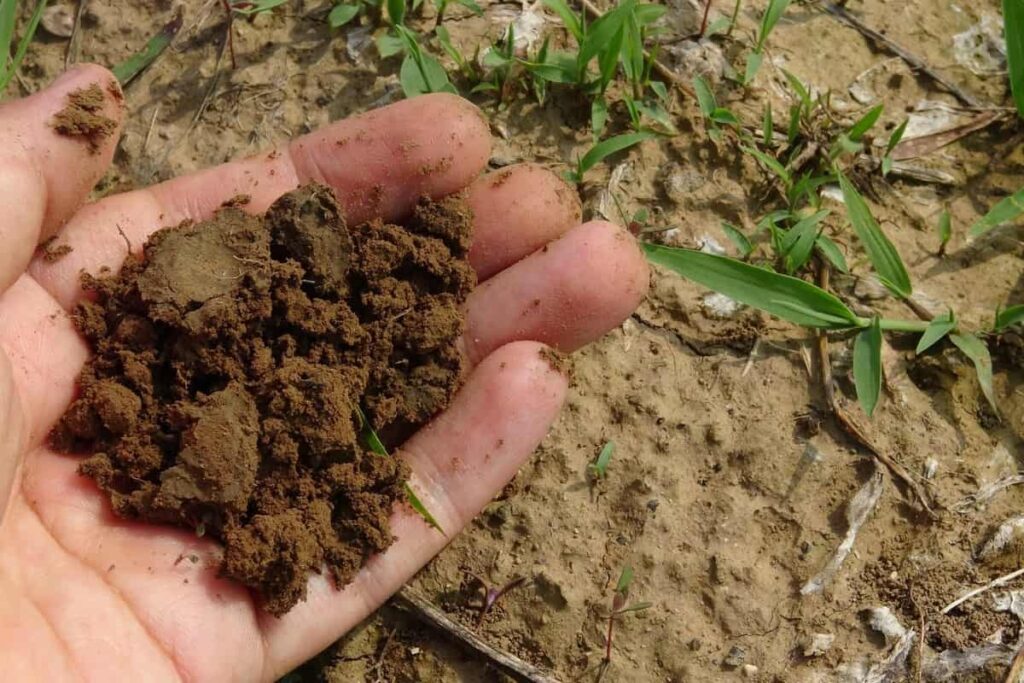
Factors that deteriorate Soil Health in Farming
- Overuse of synthetic fertilizers and pesticides: Overuse of synthetic fertilizers and pesticides can lead to imbalances in the soil, killing off beneficial microorganisms and leading to nutrient deficiencies. It leads to the development of resistant pests and diseases.
- Monoculture: Monoculture is the growing of a single crop on a large scale. It can lead to soil degradation, as the same plants are repeatedly grown in the same soil, depleting soil nutrients and leading to disease and pest issues.
- Soil compaction happens when the soil is compacted by heavy machinery or overgrazing. It can lead to poor soil structure, leading to poor water infiltration and nutrient uptake by plants.
- Soil erosion occurs when topsoil is washed or blown away by wind or water. It can lead to poor soil structure, fertility, and sedimentation in waterways and other natural habitats.
- Overgrazing: Overgrazing occurs when too many animals are allowed to graze on a piece of land. It can lead to soil compaction, loss of vegetation, and erosion.
- Climate change: Climate change can lead to more severe weather events such as drought, floods, and storms, leading to soil erosion, nutrient loss, and compaction.
- Urbanization: Urbanization can lead to the soil being covered with concrete and other hard surfaces, reducing its ability to support plant growth and microorganisms.
Overall, by avoiding these practices and mitigating their impact, farmers can help maintain and improve their soil’s health, supporting sustainable agriculture.
Ways to Improve Soil Health in Sustainable Agriculture
- Crop rotation is the practice of planting various crops on the same land for several years. Introducing various types of organic matter helps to control pest and disease cycles and enhance soil fertility.
- Cover cropping is the technique of planting a crop that is not meant to be harvested but is used to promote soil health. Cover crops can help to improve soil structure, minimize erosion, and contribute organic matter to the soil.
- Reduced tillage: Reduced tillage uses less intensive soil preparation methods, such as no-till or strip-till. It helps reduce erosion, improve soil structure, and increase the amount of organic matter in the soil.
- Composting: Composting breaks down organic matter to create a nutrient-rich soil amendment. Composting can be done on the farm using farm waste or purchased from a local composting facility.
- Conservation tillage: Conservation tillage is a farming practice that minimizes soil disturbance and leaves crop residue on the soil surface. It can help to improve soil structure, water infiltration, and nutrient cycling.
- Manure and compost: Both manure and compost are rich in organic matter and nutrients for the soil. They have the potential to boost soil health and fertility.
- Managing pests and disease: Pests and diseases can significantly impact soil health. By managing these issues, farmers can reduce the need for synthetic pesticides and fertilizers and improve the health of their soil.
- Balanced soil fertility: A balanced soil fertility ensures that the soil has the right amount of nutrients for the plants to grow, but not too much. Balanced soil fertility is essential for the health of the soil and the plants.
- Proper soil drainage is important to prevent waterlogging, which can lead to poor soil health. Drainage helps the soil to dry out after heavy rain and prevents waterlogging.
- Organic matter: Organic matter is the building block of healthy soil. It provides the necessary nutrients and energy for microorganisms and helps to improve soil structure, fertility, and water-holding capacity. Organic matter is added to the soil through crop residues, cover cropping, and composting.
- Microorganisms: Soil is home to a diverse community of microorganisms, including bacteria, fungi, and protozoa. These microorganisms play a vital role in breaking down organic matter and releasing nutrients for plants. They also help to improve soil structure and fertility and to suppress pests and diseases.
In case you missed it: Vegetable Seed Germination Chart: A Calendar to Time and Soil Temperature

Conclusion
Soil health is a critical component of sustainable agriculture. Healthy soil can hold more water and minerals, increasing crop yields while reducing the need for synthetic fertilizers and pesticides. Additionally, healthy soil can support a diverse community of microorganisms, which helps to improve soil structure and fertility. By using techniques such as crop rotation, cover cropping, reduced tillage, composting, and managing pests and disease, farmers can improve the health of their soil and support sustainable agriculture.
- How to Raise Pigs in Your Own Backyard: A Comprehensive Guide
- Budget Friendly Sheep Shed Ideas: Cheap and Low-Cost Tips
- How Much Do Cattle Farmers Make: Revenue Streams in Cattle Farming
- Management Pests and Diseases in Your Cotton Field
- Sheep Farming Business Plan for Beginners
- Aquaponic Farming at Home: A Step-By-Step Guide
- Profitable Village Farming Business Ideas in 2024
- High-Yield Aquaculture: Fast-Growing Fish for Farming
- Effective Fish Pond Construction Techniques for Beginners
- Irrigation and Water Management in Pineapple Farming
- Blossom to Harvest: Mastering Flowering and Pollination in Papaya Farming
- Pig Fattening Essentials: From Selection to Sale for Beginners
- Raising Wagyu Cattle: A Complete Guide for Premium Beef Production
- Soil Types and Their Water Holding Capacity
- Optimizing Irrigation Schedules for Coconut Groves for Enhanced Yield
- Espresso Your Garden: Coffee Grounds for Healthier Acid-Loving Plants
- The Best Soil Mix for Snake Plants: How to Mix Your Own Snake Plant Soil
- Green Thumb Success: Expert Tips for Cultivating Greenhouse Beans All Year Round
- Bloom All Year Round: The Ultimate Guide to Indoor Hyacinth Care
- Eco-Friendly Gardening: How to Make Liquid Fertilizer from Kitchen Waste
- Ultimate Guide to Grow Anise in Pots: Explore Seed Propagation to Harvesting
- Guide to Raising Chester White Pigs: Discover Breed Facts to Growth Management
- Mastering the Elegance: The Ultimate Guide to Weeping Cherry Tree Care, Planting, and Maintenance
- Ultimate Guide to Planting Garlic in Grow Bags: Growing Strategies for Beginners
- How to Fix Spider Plant Leaf-Related Problems: Natural and Organic Remedies
- 10 Reasons Why Your Tulsi Plant is Shedding Leaves: Home Remedies and Solutions
- Optimizing Growth and Yield: The Advantages of Palm Bunch Ash Fertilizer
- Utilizing Neem Oil Extract as a Natural Pesticide for Hydrangea
- From Soil to Harvest: Various Ways in Which Farmers Can Use AI Tools
- Steps to Encourage and Induce Citrus Flowers: A Comprehensive Guide
- How to Fix Snake Plant Leaf-Related Issues: Natural and Organic Remedies
- Transform Your Garden into a Fragrant Oasis with Raat Ki Rani (Night Blooming Jasmine)
- Discover the Ideal Chicken Breeds for Philippine Farms
- How to Create a Poultry Egg Farm Business Plan for Profits
- Grow Lemon Cucumbers Like a Pro: Insider Techniques for Bountiful Yields
- Ultimate Guide to Caring for Your Pink Princess Philodendron: Tips for Thriving Variegation
